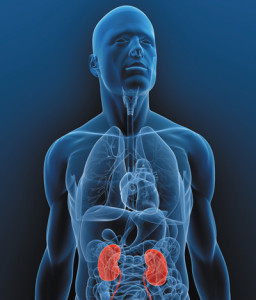
 Technological advancements have affected a sea change in almost all verticals of healthcare, including urology. Every aspect of urology has changed the way the specialty is practised. Da Vinci has taken surgery beyond the limits of human hand. Laser promises precise, char free and virtually bloodless incision. Immunologic mismatch will no longer be a barrier between living kidney donors and recipients. No Touch Technique in conjunction with the antibiotic and lubricious coating are the latest penile implants. To relieve blocked urine flow in the elderly, permanent implants (FDA-approved) have been developed. The list of medical miracles and breakthroughs in urology is simply endless.
Technological advancements have affected a sea change in almost all verticals of healthcare, including urology. Every aspect of urology has changed the way the specialty is practised. Da Vinci has taken surgery beyond the limits of human hand. Laser promises precise, char free and virtually bloodless incision. Immunologic mismatch will no longer be a barrier between living kidney donors and recipients. No Touch Technique in conjunction with the antibiotic and lubricious coating are the latest penile implants. To relieve blocked urine flow in the elderly, permanent implants (FDA-approved) have been developed. The list of medical miracles and breakthroughs in urology is simply endless.
In Uro-oncology, the most common major surgery was and continues to be radical cystetctomy. The incidence of various tumours in this domain has remained the same and the bladder cancer forms the most common tumor. Until 1980, it was the era of radiotherapy and cystectomy was simply a salvage procedure.

Ureteroscopy has almost replaced surgery in the treatment of ureteric stone. Calculi in the upper tract lies within the reach of traditional extra corporeal shock wave treatment, ureteroscopy has gained wider popularity for stones situated in the iliac. Again, ureteroscopy has an edge in patients who have larger calculi. Earlier, ureteric stones required blind basketry and open surgery but this has been replaced by ESWL (Extra Corporal Shockwave Lithotripsy ). Ureteroscopy with laser lithotripsy has emerged as first line therapy for ureteral calculi.
Despite all advances, mens health in India continues to be in shambles. It is yet to be included in the national programme! With a load full of urological problems in a country of 1.3 billion, we have just a handful of urologists.
“Urology has always been at the vortex of minimally invasive procedure that has changed the face of surgery”

Prostate cancer continues to be the second most common cause of cancer in men. Globally, it is the sixth leading cause of cancer-related death in men. In India, it is growing by 1 percent every year and people are caught unaware. Prostate cancer is mostly a very slow progressing disease. Men who die of old age, may not have realized that they had prostate cancer. Studies indicate that nearly fifty percent of all 50 year old men have PIN (Prostatic intraepithelial neoplasia).
It all begins with tiny alterations in the shape and size of the prostate gland cells. It remains confined to the gland, progresses slowly and may not cause a serious harm. However, the cancer may escalate at an alarming rate and require urgent medical assistance . In May 2013, the US FDA approved radium Ra 223 dichloride for metastatic castration-resistant prostate cancer that has reached bones but not other organs.
In India, every seventh couple is infertile and male factors account to 50 percent of the infertility. Male infertility is labelled only after semen analysis. The causes may be as simple as stress and smoking, while other reasons may be infections, hormonal disorders or genetic issues. Proper diagnosis is required to arrive at a conclusion.
Prostate Cancer
One new case of prostate cancer occurs every 2.5 minutes and a man dies from prostate cancer every 17 minutes. As it is a slow growing cancer, the survival rate is high
Other sex-related problems like erectile dysfunction, premature ejaculation and hypogonadism are emerging at an alarming rate. Other uro issues like frequent urination, bladder problems, kidney disease, incontinence, etc deserve an early detection and treatment.
Nearly 1.5 lakh people in India suffer from renal failure but only 4,500 renal transplants are done each year. There are still challenges and loopholes in organ transplant programm. It is time to address them so that we can develop an ideal networking for organ retri and sharing.
Infertility is a Male Factor too
Diabetes and hypertension are the commonest causes of organic erectile dysfunction. Due to a large number of diabetic men in India, erectile dysfunction is very common but very few men receive treatment, either because they do not know that treatment is available or because they are too embarrassed to seek help.
Infertility affects 1 in every 7 couples and in more than half of these cases the male factor is responsible, solely or partially, for the problem. Despite this, men are reluctant to get tested and often the women are pushed in for medical investigations.
Be a part of Elets Collaborative Initiatives. Join Us for Upcoming Events and explore business opportunities. Like us on Facebook , connect with us on LinkedIn and follow us on Twitter , Instagram.












